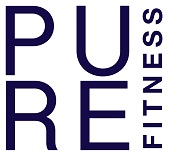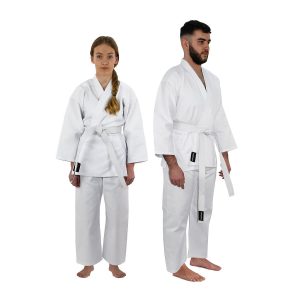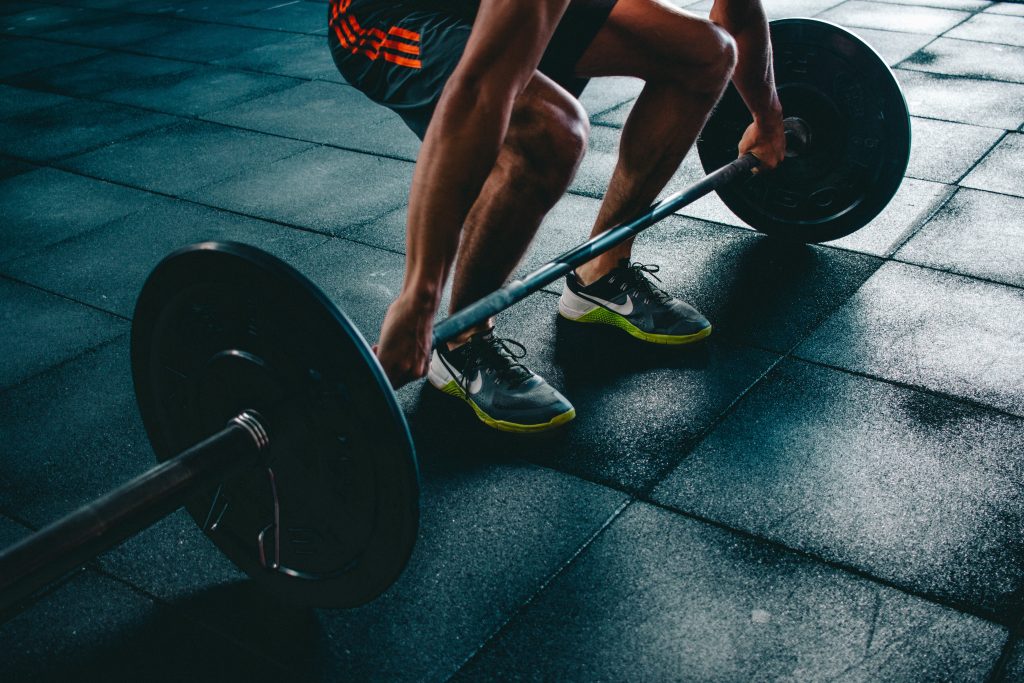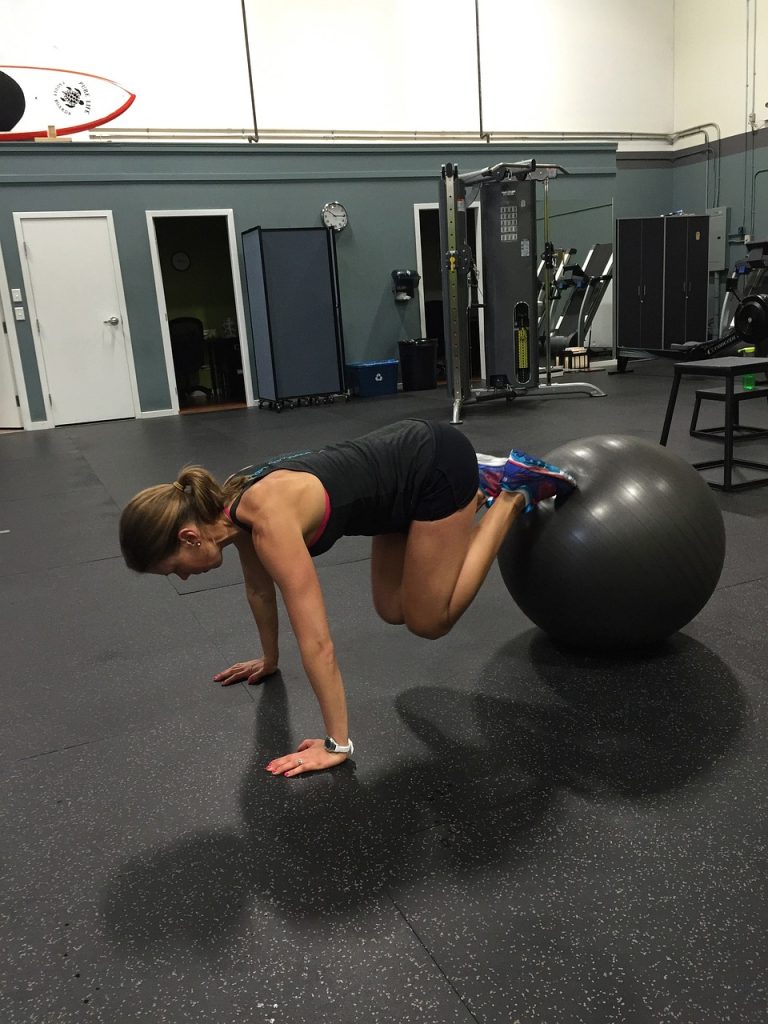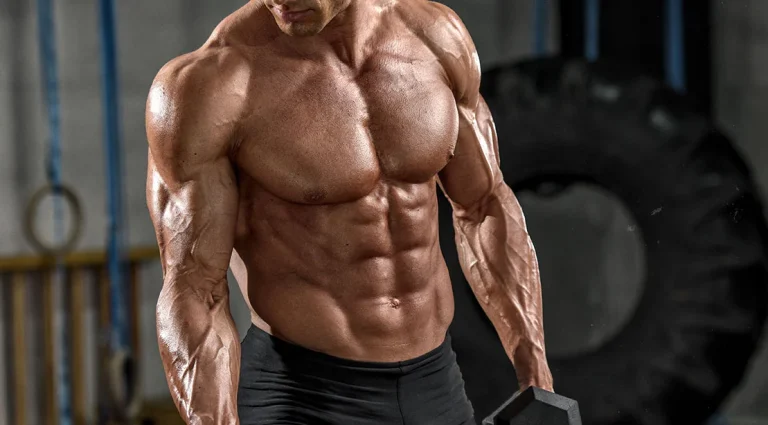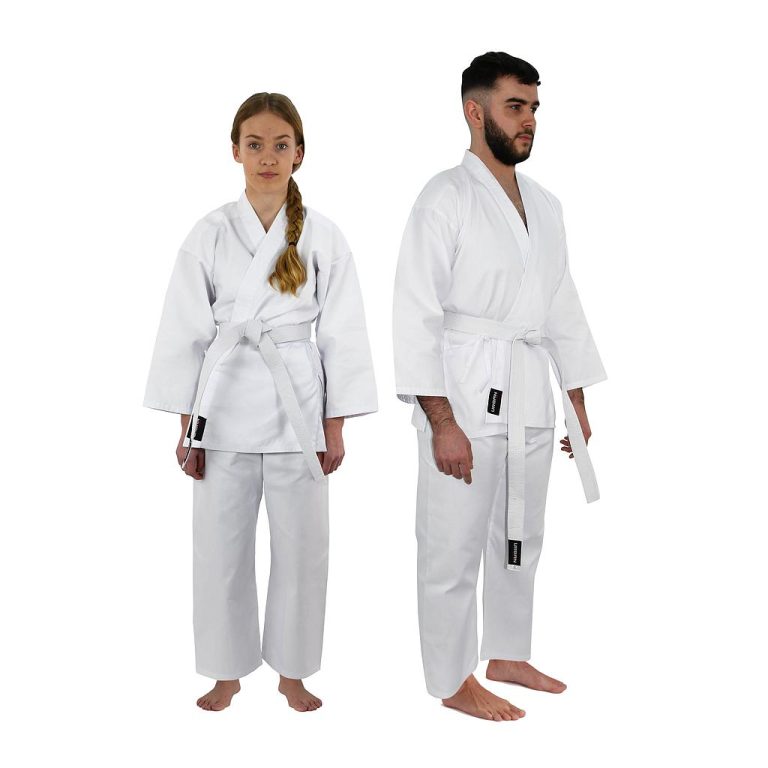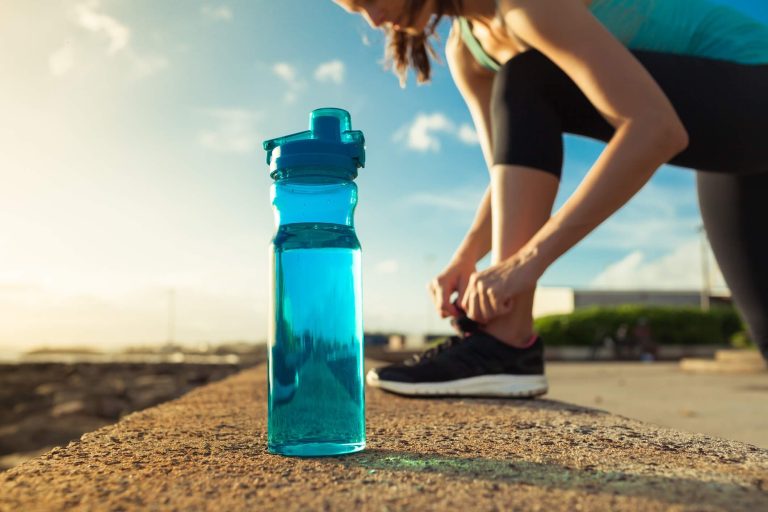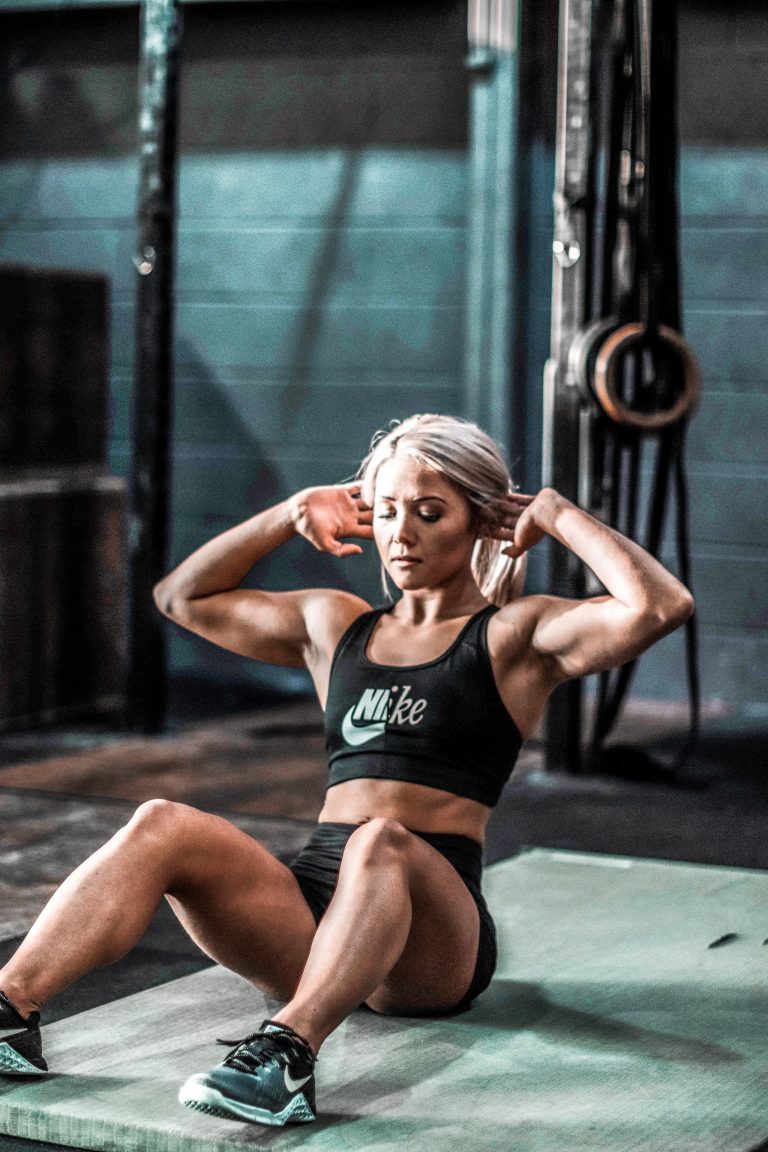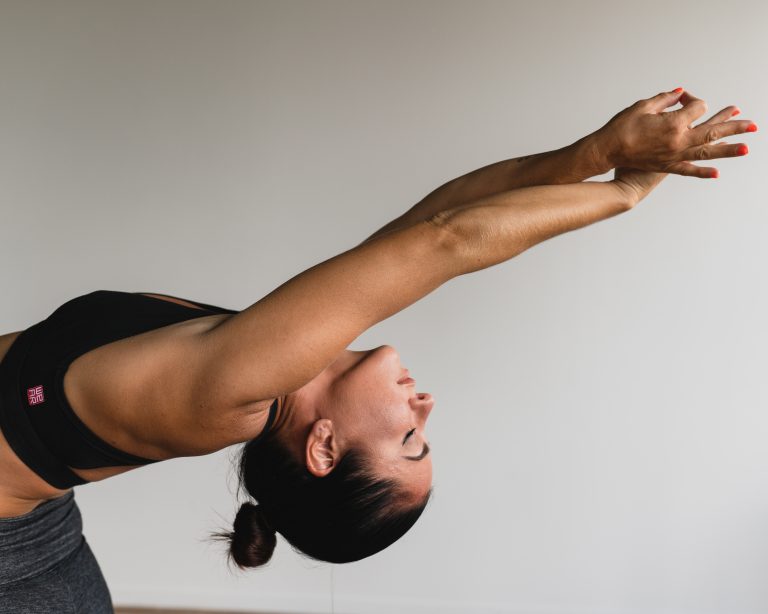So you’ve decided to try your hand at martial arts, but you’re not quite sure how to get in shape for it. Well, fear not, because getting fit for martial arts is easier than you might think. Whether you’re a beginner or an experienced practitioner, there are a few key elements to focus on to ensure you’re physically prepared for the challenges ahead. From strength and conditioning exercises to flexibility training, this article will guide you through the steps to get fit and ready to take on the world of martial arts.
Table of Contents
ToggleBenefits of Being Fit for Martial Arts
Martial arts is a physically demanding discipline that requires you to be in top shape. Being fit not only enhances your performance but also improves your overall well-being. Here are some of the key benefits of being fit for martial arts.
Increased Stamina
One of the primary benefits of being fit for martial arts is increased stamina. Martial arts training pushes your body to its limits, requiring you to have the endurance to perform intense movements for extended periods. By developing your cardiovascular fitness through regular training, you’ll be able to sustain high levels of intensity throughout your sessions, allowing you to perform at your best for longer durations.
Improved Strength
Another crucial aspect of being fit for martial arts is improved strength. Strength training is essential for developing the power and explosiveness needed to execute various techniques effectively. Building strength in your core, upper body, and lower body will provide you with the stability and control necessary for executing powerful strikes, throws, and takedowns. Additionally, increased strength contributes to overall muscle development, enhancing your physique and giving you a solid foundation for martial arts movements.
Enhanced Flexibility
Flexibility is a key component of martial arts, allowing you to execute a wide range of techniques with precision and fluidity. By including regular stretching exercises in your training routine, you can improve your flexibility and prevent injury. Increased flexibility enables you to perform high kicks, deep stances, and intricate grappling moves with ease. It also enhances your overall mobility, making you more agile and responsive during combat situations.
Better Balance and Coordination
Having good balance and coordination is fundamental to martial arts. It enables you to maintain stability during movement and effectively execute techniques. Developing your balance and coordination through specialized training exercises will significantly improve your performance. These exercises focus on strengthening your core, enhancing proprioception, and refining your body awareness. As a result, you’ll experience improved body control, quicker reflexes, and the ability to quickly adapt to changing situations.
Understanding the Martial Arts Training Process
Before embarking on your journey to become fit for martial arts, it’s important to understand the key elements of the training process. By following these steps, you can set yourself up for success and make the most of your training.
Setting Goals
Establishing clear and realistic goals is essential for your martial arts training. Determine what you want to accomplish, whether it’s mastering a specific technique, advancing to a higher belt rank, or competing in martial arts tournaments. Setting goals helps you stay motivated and provides a roadmap for your training. Break down your goals into smaller, achievable milestones to keep track of your progress and celebrate your accomplishments along the way.
Choosing the Right Martial Art
There are numerous martial arts styles to choose from, each with its unique techniques, training methods, and philosophies. Take the time to research different martial arts styles and find the one that aligns with your interests, goals, and physical abilities. Whether you prefer striking arts like karate or Tae Kwon Do, grappling arts like Brazilian Jiu-Jitsu or Judo, or a combination of both like Mixed Martial Arts (MMA), selecting the right martial art will ensure that you enjoy your training and stay committed in the long run.
Finding a Qualified Instructor
Having a knowledgeable and experienced instructor is crucial for your martial arts journey. They will guide you through the proper techniques, provide valuable feedback, and ensure your safety during training. Look for instructors who have legitimate certifications, years of experience in the martial arts, and a teaching style that resonates with you. A good instructor will motivate and inspire you, creating a positive learning environment that fosters growth and progress.
Creating a Training Schedule
Consistency is key when it comes to martial arts training. Develop a training schedule that fits your lifestyle and allows for regular practice. Incorporate both martial arts-specific training sessions and supplementary exercises to target different aspects of fitness, such as cardio, strength, flexibility, and coordination. Setting aside dedicated training time and adhering to a schedule will help you build discipline, improve your skills, and reach your fitness goals efficiently.
Building Cardiovascular Endurance
Cardiovascular endurance plays a vital role in martial arts performance. It is the ability of your heart, lungs, and blood vessels to deliver oxygen to your muscles efficiently during physical activity. Improving your cardiovascular endurance will not only enhance your martial arts performance but also increase your overall fitness level and improve your health.
Importance of Cardiovascular Endurance
Having good cardiovascular endurance allows you to sustain high-intensity activities for extended periods without experiencing fatigue. It enables you to perform at your peak during matches and allows for quicker recovery between rounds. Moreover, improved cardiovascular fitness reduces the risk of heart disease, lowers blood pressure, and increases your overall energy levels. By incorporating cardiovascular exercises into your training routine, you can significantly enhance your endurance and reap these benefits.
Choosing Cardio Exercises
There are various cardiovascular exercises you can incorporate into your training routine to improve your endurance. Running, cycling, swimming, and jumping rope are excellent choices that engage large muscle groups and elevate your heart rate. These exercises can be adjusted to match your current fitness level, whether you’re a beginner or more advanced. Aim for at least 150 minutes of moderate-intensity cardio exercises per week, gradually increasing the intensity and duration as you progress.
Interval Training Techniques
Interval training is a highly effective method for improving cardiovascular endurance. It involves alternating between high-intensity bursts and low-intensity recovery periods. This type of training enables you to work at a higher intensity for longer durations, increasing your anaerobic capacity and improving your overall endurance. Incorporate interval training into your cardio workouts by performing intense exercises for, say, 30 seconds, followed by a short recovery period of 15-30 seconds. Repeat this cycle for several rounds, gradually increasing the intensity and duration as your fitness improves.
Developing Strength and Power
Strength and power are essential components of martial arts. Developing these attributes through specific training methods will enhance your striking power, grappling strength, and overall performance in the martial arts realm.
Importance of Strength Training
Strength training is essential for martial artists as it builds the foundation for power, stability, and resistance against opponents. By engaging in regular strength training exercises, you can develop stronger muscles and improve your overall body composition. Increased strength allows you to generate more force in your strikes, execute takedowns with more control, and overpower opponents during grappling exchanges. Additionally, strength training helps prevent injuries by strengthening muscles, tendons, and ligaments, providing better joint stability.
Weightlifting Exercises
Weightlifting exercises are a popular and effective way to develop strength and power. Focus on compound movements that target multiple muscle groups simultaneously, such as squats, deadlifts, bench presses, and overhead presses. These exercises require proper form and technique to maximize their effectiveness and prevent injury. Start with light weights and gradually increase the resistance as your strength improves. Incorporate strength training sessions into your weekly routine, allowing enough recovery time between sessions for muscles to repair and grow stronger.
Bodyweight Exercises
In addition to weightlifting, bodyweight exercises are an excellent way to improve strength and power. These exercises utilize your body weight as resistance, allowing you to train anywhere, anytime, without the need for equipment. Push-ups, pull-ups, squats, lunges, and planks are just a few examples of bodyweight exercises that target different muscle groups and build functional strength. As your strength improves, you can modify these exercises by adding variations or increasing the difficulty to continue challenging your muscles.
Improving Flexibility and Mobility
Flexibility and mobility are vital for martial artists as they enhance performance, reduce the risk of injury, and allow for a greater range of motion. By implementing specific stretching techniques and incorporating practices like yoga and Pilates, you can significantly improve your flexibility and mobility, contributing to your overall martial arts abilities.
Stretching Importance
Stretching is a fundamental aspect of martial arts training that aims to improve flexibility and joint range of motion. Regular stretching exercises not only increase muscle flexibility but also help maintain optimal posture and alignment during techniques. By elongating the muscles, tendons, and ligaments, stretching improves muscle elasticity, allowing for better movement efficiency and reducing the risk of strains and sprains. It is important to warm up before stretching to increase blood flow to the muscles and prevent injuries.
Dynamic Stretching
Dynamic stretching is a form of stretching that involves continuous movement through a full range of motion. It helps improve muscle performance by increasing blood flow and activating the nervous system. Dynamic stretching is particularly beneficial before training sessions or competitions as it prepares the body for the upcoming movements and prevents injury. Examples of dynamic stretches include leg swings, arm circles, and walking lunges.
Static Stretching
Static stretching involves holding a stretch in a fixed position for a certain period. It is typically done at the end of a training session or during a cool-down to gradually lengthen muscles and improve flexibility. Static stretching allows muscles to relax and elongate, reducing muscle tension and improving overall flexibility. Make sure to hold each static stretch for approximately 30-60 seconds and focus on proper breathing to enhance relaxation and optimize the stretch.
Yoga and Pilates
Yoga and Pilates are holistic practices that combine physical postures, breathing techniques, and mental focus to improve flexibility, strength, and body awareness. Both disciplines promote balance, coordination, and mindfulness, making them an excellent complement to martial arts training. Yoga and Pilates routines can be tailored to target specific muscle groups, enhance joint mobility, and develop core strength. By incorporating regular yoga or Pilates sessions into your training routine, you can achieve a greater range of motion, improved posture, and enhanced mind-body connection.
Enhancing Balance and Coordination
Balance and coordination are essential skills for any martial artist. They allow you to maintain control, execute techniques with precision, and avoid injury. By incorporating specific training exercises and drills into your routine, you can significantly enhance your balance and coordination, resulting in improved overall performance.
Balance Training Exercises
Balance training exercises focus on improving your body’s stability and equilibrium. They challenge your proprioceptors, which are specialized sensory receptors responsible for detecting body position and movement. Simple exercises like single-leg stands, walking on a balance beam, and performing squats on a Bosu ball can help improve your balance. As you progress, you can increase the difficulty by incorporating dynamic movements or utilizing unstable surfaces like balance boards or wobble cushions.
Coordination Drills
Coordination drills involve performing movements that require precise timing and synchronization of different body parts. These drills often simulate martial arts techniques or combinations and enhance your ability to link movements seamlessly and efficiently. Shadow boxing, speed bag training, ladder drills, and agility ladder exercises are all effective ways to improve coordination. Consistent practice of coordination drills helps develop muscle memory and refine your motor skills, enabling you to execute techniques with precision and fluidity.
Proprioception Training
Proprioception training focuses on enhancing your body’s awareness and control of movement through exercises that challenge your balance and body positioning. One effective method of proprioception training is using instability equipment such as balance pads, foam rollers, or wobble boards. These tools introduce unpredictable surfaces that require constant adjustments and engage multiple muscle groups, ultimately improving proprioception and neuromuscular control. By incorporating proprioception training into your routine, you can sharpen your reflexes and become better attuned to your body’s movements.
Mental Preparation for Martial Arts
Martial arts training not only requires physical agility but also mental fortitude. To excel in martial arts, it is essential to develop mental focus, concentration, and control. The following techniques can help you enhance your mental preparedness for your martial arts journey.
Focus and Concentration
Focus and concentration are essential for martial artists, as they enable you to stay in the present moment and react quickly to changing situations. Developing focus and concentration can be achieved through meditation and mindfulness practices. Consider incorporating a daily meditation routine into your schedule, even if it’s just a few minutes. This can help calm the mind, improve mental clarity, and enhance your ability to focus during training and competition.
Visualization Techniques
Visualization is a powerful technique that involves mentally rehearsing movements or scenarios in your mind. By visualizing successful performances, you can enhance your confidence, improve technique, and familiarize yourself with different situations. Before training sessions or competitions, take a few moments to visualize yourself executing techniques flawlessly, reacting quickly to opponents, and achieving your desired outcome. This mental practice can help enhance your muscle memory and improve overall performance.
Breathing Exercises
Proper breathing techniques are crucial for martial arts as they help regulate energy, increase endurance, and promote relaxation. Deep diaphragmatic breathing helps supply oxygen to your muscles, calms the nervous system, and reduces stress and tension. Take the time to practice deep breathing exercises, both during training and in your daily life. Focus on breathing in deeply through the nose, filling your lungs, and exhaling slowly through the mouth. This controlled breathing promotes a relaxed state of mind and enables you to perform at your best.
Maintaining Proper Nutrition
In order to support your martial arts training and achieve optimal fitness, maintaining proper nutrition is essential. A balanced and nutritious diet not only fuels your body but also aids in recovery, enhances performance, and keeps you healthy. Consider the following aspects of proper nutrition to optimize your martial arts journey.
Importance of a Healthy Diet
A healthy diet is the foundation of your martial arts nutrition plan. It should consist of a variety of nutrient-dense foods that provide the necessary macronutrients (carbohydrates, protein, and fats) and micronutrients (vitamins and minerals) for optimal function. Emphasize whole grains, lean proteins, fruits, vegetables, healthy fats, and plenty of water in your diet. Minimize the consumption of processed foods, sugary snacks, and drinks high in empty calories, as these can impede your progress and hinder your performance.
Macro and Micronutrients
Understanding the role of macronutrients and micronutrients in your diet is essential for maintaining proper nutrition. Macronutrients, such as carbohydrates, protein, and fats, provide energy, build and repair tissues, and support various bodily functions. Micronutrients, including vitamins and minerals, are essential for overall health and well-being. Ensure that your diet includes a balance of carbohydrates for energy, protein for muscle repair and growth, healthy fats for brain function, and a variety of fruits and vegetables to meet your micronutrient needs.
Eating for Energy and Recovery
As a martial artist, your training sessions can be physically demanding, requiring fuel for energy and efficient recovery. Prioritize consuming balanced meals and snacks to maintain stable energy levels throughout the day. Ideally, aim for a combination of carbohydrates and protein before and after training to provide energy, promote muscle repair, and replenish glycogen stores. Hydration is also vital for optimal performance and recovery, so be sure to drink enough water throughout the day and during training sessions.
Avoiding Common Training Mistakes
To make the most of your martial arts training and progress efficiently, it’s important to avoid common training mistakes. By being aware of these pitfalls and taking necessary precautions, you can ensure a safe and effective training experience.
Overtraining
Overtraining occurs when your training volume and intensity exceed your body’s ability to recover. Pushing yourself too hard without adequate rest and recovery can lead to decreased performance, increased risk of injury, and physical and mental burnout. It’s essential to listen to your body and allow for sufficient rest days in your training schedule. Incorporate active recovery activities like light stretching, foam rolling, or gentle low-impact exercises to promote muscle repair and rejuvenation.
Ignoring Rest and Recovery
Rest and recovery are as important as training itself. Your body needs time to adapt and repair from the physical stress experienced during training. Ignoring rest and recovery days can hinder progress, lead to overuse injuries, and negatively impact your overall performance. Make sure to include rest days in your training schedule to allow your body to rest, recover, and rebuild. Incorporate techniques like foam rolling, massage, and adequate sleep to support recovery and optimize your training results.
Improper Technique and Form
Practicing correct technique and form is crucial for martial arts performance and minimizing the risk of injury. Keep in mind that quality technique takes precedence over quantity. Pay close attention to the guidance of your instructor and focus on mastering the fundamentals before progressing to more advanced techniques. Avoid rushing or sacrificing proper form in favor of speed or power. By prioritizing correct technique, you’ll lay a solid foundation for your martial arts journey and safeguard yourself against unnecessary injuries.
Incorporating Cross-Training
Cross-training refers to participating in a variety of physical activities outside of your primary martial arts training. Incorporating cross-training into your routine offers numerous benefits and can enhance your overall fitness and martial arts performance.
Benefits of Cross-Training
Cross-training helps prevent boredom, plateaus, and overuse injuries by engaging different muscle groups and challenging your body in new ways. It improves overall fitness by targeting different aspects such as strength, cardiovascular endurance, flexibility, balance, and coordination. Additionally, cross-training provides mental stimulation, allowing you to constantly learn and grow in various disciplines. By diversifying your training, you’ll develop a well-rounded skill set and increase your adaptability to different training environments and combat situations.
Alternative Training Methods
When it comes to cross-training, the options are endless. Consider activities such as swimming, cycling, running, hiking, dance, or group fitness classes like HIIT or kickboxing. These activities offer different movement patterns, training intensities, and skill requirements than your martial arts training, providing a refreshing change of pace. Participating in different activities also promotes active recovery, prevents muscular imbalances, and fosters a more holistic approach to fitness.
Combining Martial Arts and Other Fitness Activities
Combining martial arts with other fitness activities can be a great way to enhance your skills and overall fitness level. For example, incorporating strength training exercises into your routine can improve power and explosive movements. Yoga or Pilates classes can help improve flexibility, balance, and body awareness. High-intensity interval training (HIIT) sessions can boost cardiovascular endurance and improve metabolic conditioning. By exploring different fitness activities and integrating them into your martial arts training, you can create a diverse and well-rounded routine that optimizes your overall performance and fitness level.
In conclusion, getting fit for martial arts requires a comprehensive approach that encompasses physical, mental, and nutritional aspects. By recognizing the benefits of increased stamina, improved strength, enhanced flexibility, and better balance and coordination, you can set yourself up for success. Understanding the martial arts training process, building cardiovascular endurance, developing strength and power, improving flexibility and mobility, enhancing balance and coordination, mental preparation, maintaining proper nutrition, avoiding common training mistakes, and incorporating cross-training are all integral components of a well-rounded fitness regimen for martial arts. Embrace these practices, seek guidance from qualified instructors, and stay dedicated to your training to embark on a rewarding and fulfilling martial arts journey.
